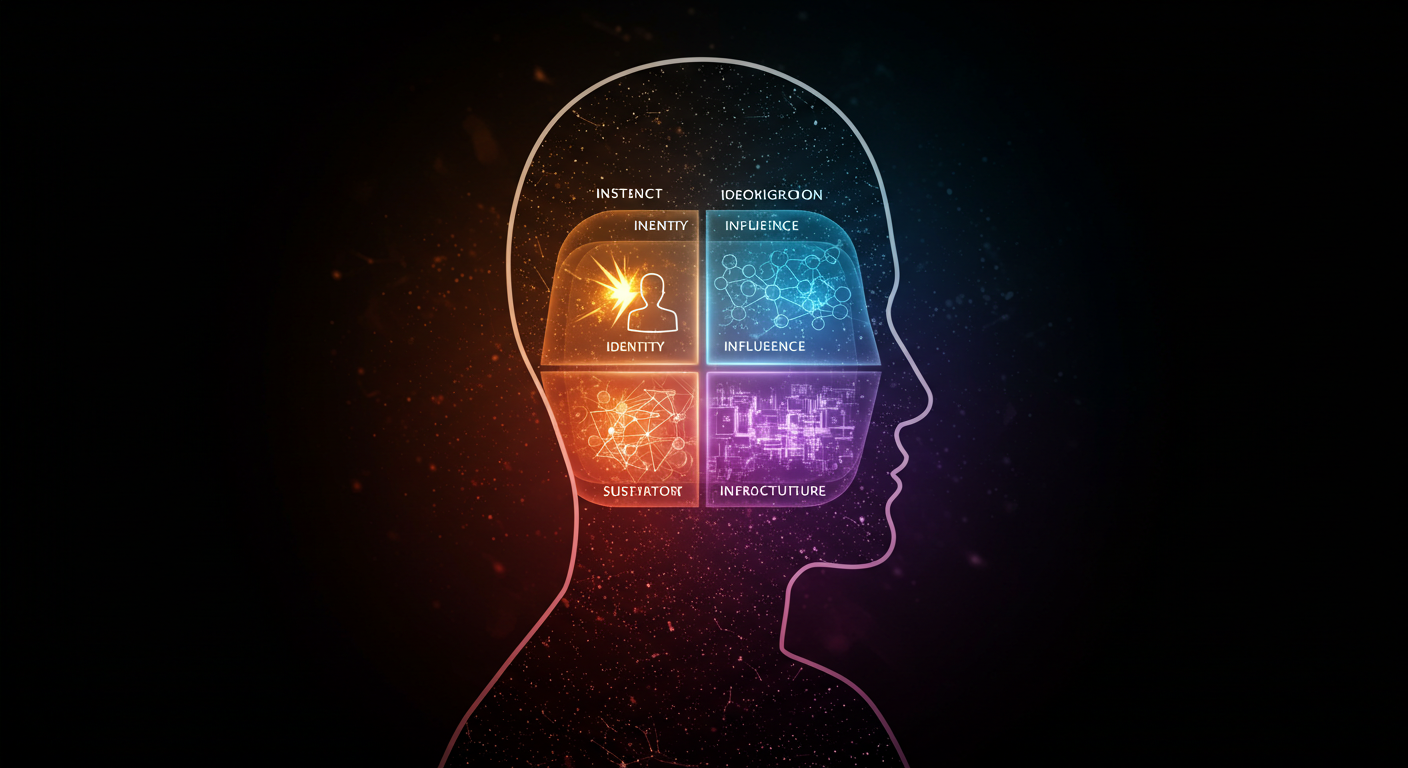The internet has changed the way people think, feel, and buy things. Once upon a time, marketers could use neat channels and general models to guess what customers would do. Psychoanalysis is more complicated, broken up, and fast-paced now than it ever was.
Brands can’t just focus on one touchpoint or one idea if they want to be successful. They need to know all the things that people do that affect their decisions, from the first time they see a brand to the long-term loyalty that keeps them coming back.
The four levels of digital behaviour are a structure that every marketer should know how to use.
1. The Instinct Layer – The Fast Brain
This is where choices start. Before our brains start to use reasoning, our instincts tell us what to do. A sound, a colour, or a swipe notice can all be used to take action right away. Today, time is more valuable than money, and the first three seconds are all that matter in deciding if a person stays or scrolls. This means that marketers need to make things that load quickly. Complexity doesn’t always work better than simplicity and speed.
2. The Identity Layer – Who I Am (or Want to Be)
Every buy has a purpose. People don’t just buy things; they buy things that show who they are or who they want to be. With apps like Instagram and TikTok, buying things is often more of a way to show off than it is to feel good. For marketers, this means that you should connect your business to who you are. If customers think, “Others like me use this too,” you’ve gone from exchange to connection.
3. The Influence Layer – The Social Brain
People are hard-wired to copy others. Social approval, which can come from anything from famous people to everyday peer reviews, is one of the most powerful things that can change how people act online. Peer-to-peer impact often has more weight than business messages in places like Nigeria where people don’t believe standard ads. It means that marketing should make it easy for people to advocate. Set up ways for people to naturally share, like, and recommend your brand.
4. The Infrastructure Layer – The Hidden Architecture
Underneath every consumer trip is an infrastructure that you can’t see: algorithms decide what shows up in feeds, mobile payments make it easy to buy things, and transportation networks set standards for delivery. For marketers, this means that experience is a part of psychology. If checkout doesn’t work or delivery takes too long, even the best story will fall apart.
Why Layers Matter
A company that only masters one layer might have a short-term hit, but to build long-term growth, it needs to master all four. A popular campaign, like “Instinct,” won’t last if the brand doesn’t fit personality. Also, a strong group (Influence) won’t make a difference if the system breaks. And a brand’s Identity won’t grow at all if no one sees it in their feed.
Stop thinking in groups and start creating across the stack. That’s how digital marketing will grow in the future. In the digital age, the customer is not a tube that needs to be pushed through. They are a complex person who is juggling emotion, personality, impact, and infrastructure all at the same time.
“What campaign should we run?” is not the question for marketers. Instead, it should be, “What part of the consumer’s behaviour are we missing, and how can we build for it?”
Brands that can answer that will not only get clicks but also build relationships that last.
ALSO WATCH MARKETING EDGE ONTV







Comment
No comments found.